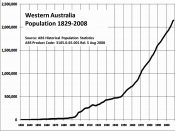In this modern society, the 'family' is typically acknowledged as a nuclear family. There are various definitions of the family; according to Bessant and Watts (2002), the family consists of a maximum of two generations sharing the same residence, where the mother and father are married based on a sexual and love relationship, with biological children. The family stays together until the children reach independence and parts from the family to form a new nuclear family. Murdock (1949, p.1 citied in Baker 2001, p.80) labels the nuclear family as a "social group characterized by common residence, economic cooperation, and reproduction." Murdock states that the families universally perform certain functions in the society in order to be of existence. He identified four critical functions that families ought to fulfill, namely the sexual, reproduction, educational and economic function (Bottomley, 1985). However, through industrialization and development in technology, the family in the present modern society is undergoing alterations.
In this essay, we will discuss the changes in respect to Murdoch's theory of the four functions the family performs.
The sexual function claims that two individuals set up a family as the family is a legitimate platform for the bearing and rearing of children, and marriage is the accepted union for sexual relationships between two adults in society (Aspin, 1982). This is proclaimed to be beneficial to social order as the family allows sexual expression between a couple and regulates sexual activity in ways that foster a disciplined society (Bessant and Watts, 2002). However, improved methods of contraception allow people to indulge in sexual activity even when they are not in a marriage. Also, there seemed to be greater acceptance to de facto relationships, as noted from the increase in cohabitation between Australian couples. Statistics shows that in 1975, only 16% of...


